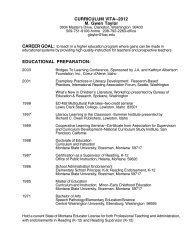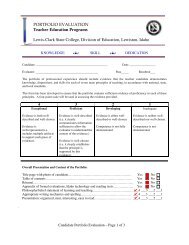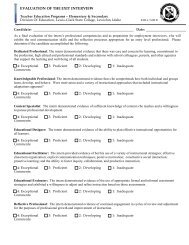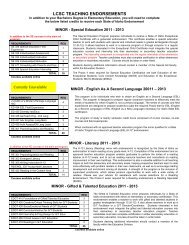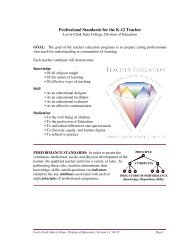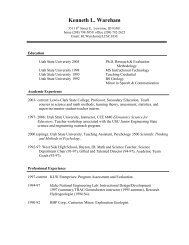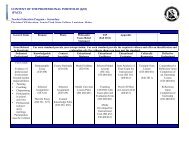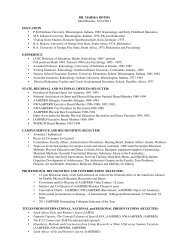PACE - LCSC Education Division - Lewis-Clark State College
PACE - LCSC Education Division - Lewis-Clark State College
PACE - LCSC Education Division - Lewis-Clark State College
You also want an ePaper? Increase the reach of your titles
YUMPU automatically turns print PDFs into web optimized ePapers that Google loves.
Key AttributeThe teacher is knowledgeable of how children, as individuals and in groups, learn and develop and how instructioncan be provided to support the intellectual, social, and personal development of all types of learners. The teacherunderstands schools as organizations within the larger community context and the laws and norms that guide theiroperation.Indicators of Performance:1. The teacher understands how children, as individuals and in groups, learn, develop, behave, and are motivated tolearn.• The teacher understands how learning occurs--how students construct knowledge, acquire skills,and develop habits of mind--and knows how to use instructional strategies that promote studentlearning through different learning styles, multiple intelligences, and performance modes. (K, S)• The teacher is aware of expected developmental progressions and ranges of individual variationwithin each domain (physical, social, emotional, moral and cognitive), can identify levels ofreadiness in learning, and understands how development in any one domain may affectperformance in others. (K, S)• The teacher understands the cognitive processes associated with various kinds of learning (e.g.critical and creative thinking, problem structuring and problem solving, invention, memorizationand recall) and how these processes can be stimulated. (K, S)• The teacher understands how individual experiences, talents, and prior learning, as well aslanguage, culture, family and community values, influence students’ learning. (K, S, D)• The teacher understands how factors in the students' environment outside of school (e.g. familycircumstances, community environments, health and economic conditions) may influence students'life and learning. (D, K)• The teacher understands how social groups function and influence people, and how peopleinfluence groups. (K, D)• The teacher understands communication theory, language development, and the role of languagein learning as well as recognizes the importance of nonverbal as well as verbal communication.(K, S, D)• The teacher understands how diversity affects communication in the classroom. (K, D)• The teacher knows about the process of second language acquisition and about strategies tosupport the learning of students whose first language is not English. (K, S, D)• The teacher understands how students’ conceptual frameworks and misconceptions regarding anarea of knowledge can influence their learning. (K)• The teacher recognizes his or her responsibility in ensuring that all students learn and is open toexpertise that supports student learning (e.g., the school counselor and community professionals).(K, S, D)• The teacher recognizes that teacher expectations influence student learning. (K, D)2. The teacher understands a variety of instructional strategies to create learning opportunities that: support theintellectual, social, and personal development of learners, encourage positive social interaction with activeengagement in learning and self-motivation, and encourage students' development of critical thinking, problemsolving, and performance skills.• The teacher understands principles and techniques, along with advantages and limitations,associated with various instructional strategies (e.g. cooperative learning, direct instruction,discovery learning, whole group discussion, independent study, interdisciplinary instruction,manipulatives, and sheltered English). (K, S)60



